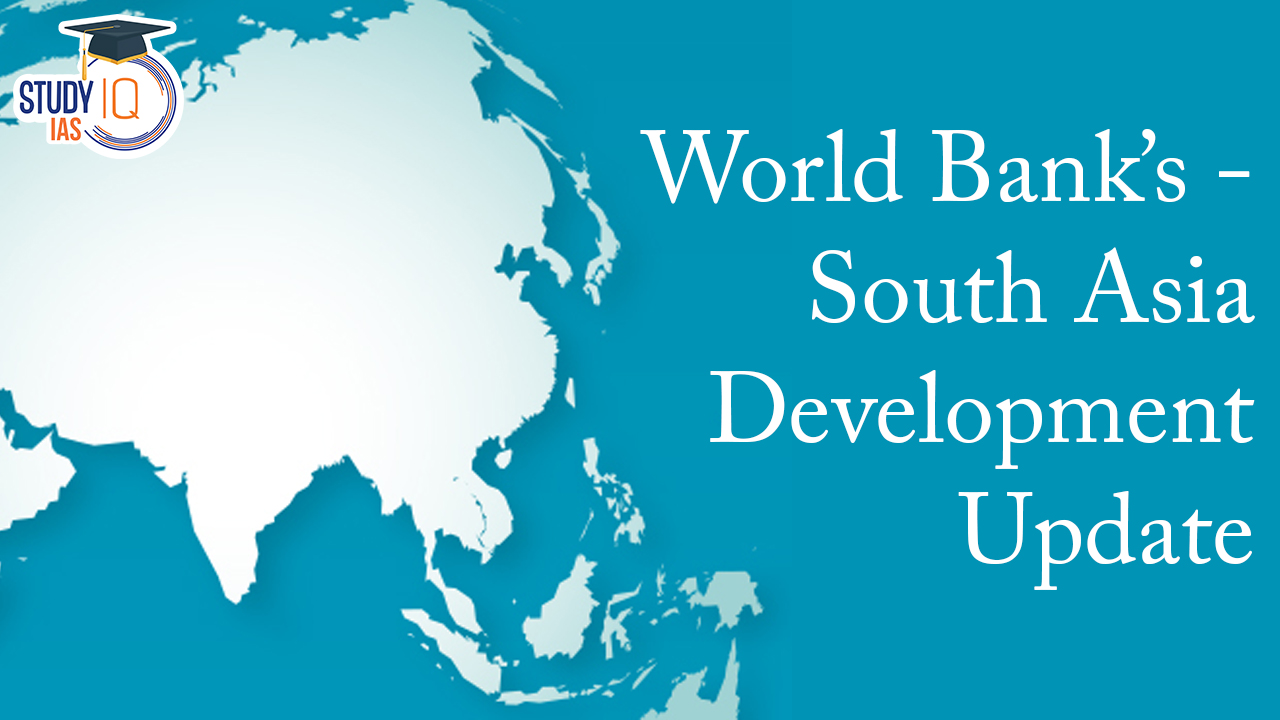Table of Contents
Context
- The World Bank forecasted a robust 6.0-6.1% economic growth for the region in 2024-25 in its “Jobs for Resilience” update.
- Additionally, it cautioned that South Asia, including India, is not capitalising on its demographic dividend due to job creation lagging behind working-age population growth.
Employment Growth in India’s Case
- India’s employment growth has fallen below the working-age population increase between 2000-2023.
- Consequently, India’s employment ratio has declined the most in South Asia (except Nepal) until 2022.
- Preliminary data shows a partial recovery with a 3% point rebound in employment ratio in 2023.
- Despite the job market struggles, India’s economy is expected to grow at a robust 7.5% in FY23/24.
Regional Impact and Potential of Growth
- Contribution to Regional Growth: India’s growth, along with recoveries in Sri Lanka and Pakistan, is a key driver of the region’s strong performance.
- Output Growth Potential: The World Bank estimates a 16% higher output growth for the region if the employment rate of the working-age population matched that of other Emerging Markets and Developing Economies (EMDEs).
Cause of Weak Employment and Recommendations
- Missed Opportunities: The region’s failure to capitalise on its demographic dividend is seen as a significant missed opportunity.
- Sector-Specific Trends: Weak employment trends are notably pronounced in non-agricultural sectors, attributed to institutional and economic challenges.
- Recommendations for Job Growth:
- Enhance women’s participation in the economy.
- Increase openness to trade.
- Improve education to support job creation.
Demographic Dividend
- The demographic dividend refers to the economic growth potential resulting from changes in a country’s population age structure.
- Specifically, it occurs when the proportion of the working-age population (15 to 64 years) is higher than the non-working age group (below 14 years and above 65 years).
- Key points about demographic dividend:
- Potential for Economic Gains: A high proportion of working-age individuals indicates that more people can be productive and contribute to economic growth.
- Demographic Transition: This occurs during the shift from a rural agrarian economy (with high fertility rates) to an urban industrialised economy (with low fertility and mortality rates).
- Requirements for Success: To fully realise this dividend, the younger population must have access to quality education, adequate nutrition, and healthcare, including sexual and reproductive health.
- Opportunities for India:
- India has the youngest workforce globally, with a median age lower than China and other developed countries.
- During the demographic dividend period, personal savings grow, leading to greater purchasing power and potential economic growth.
Jobless Growth
- Jobless growth occurs when an economy produces more goods and services without a simultaneous increase in employment opportunities.
- Trends in India:
- India witnessed jobless growth during the 12th five-year plan (2012-2017).
- Despite economic growth, the labour force expanded faster than employment.
- Factors contributing to jobless growth:
- Service-Centric Growth: The services sector (knowledge-intensive) drove growth, while the labour-intensive manufacturing sector lagged.
- Formal vs. Informal Jobs: Formal job creation was limited, reducing the inclusion of informal workers.
- Unemployment rates rose steadily, emphasising the need for job creation strategies.


 Securities Markets Code Bill 2025: Towar...
Securities Markets Code Bill 2025: Towar...
 Weakly Interacting Massive Particles (WI...
Weakly Interacting Massive Particles (WI...
 India–Oman Trade Deal: CEPA Signed to ...
India–Oman Trade Deal: CEPA Signed to ...

























